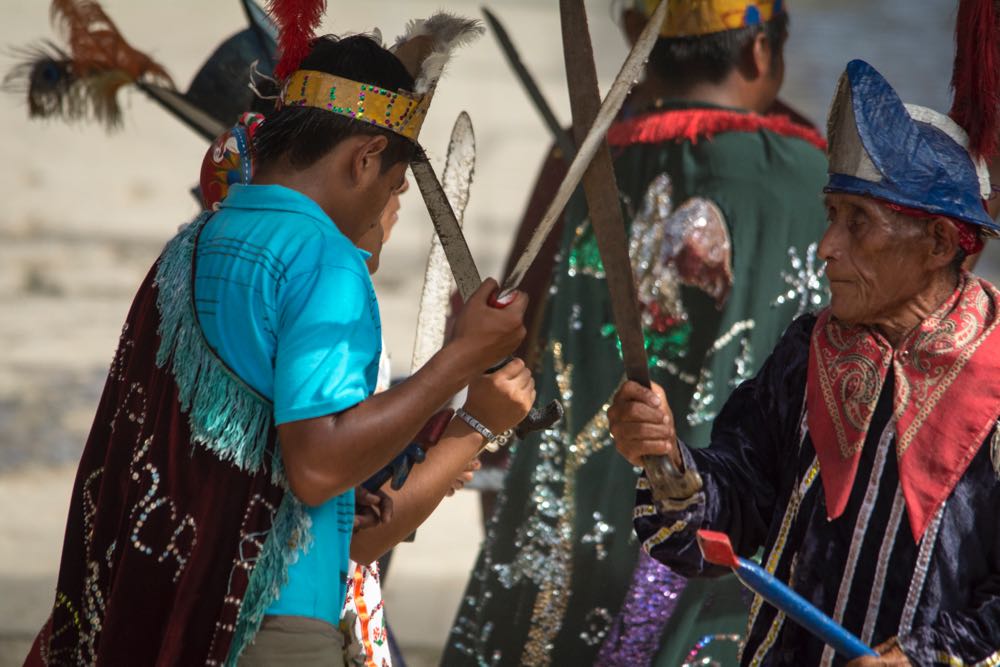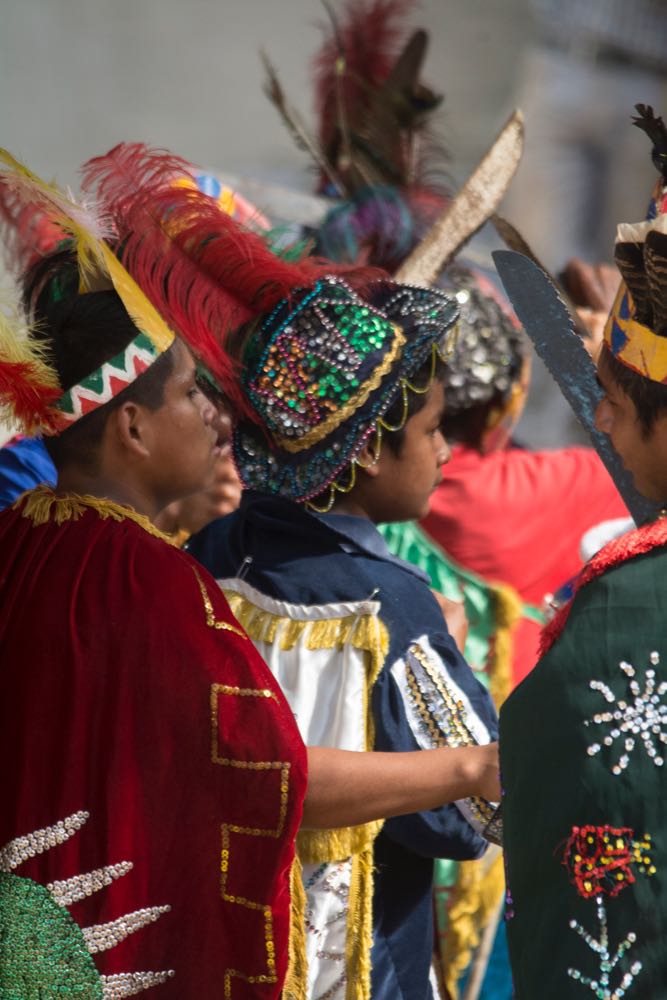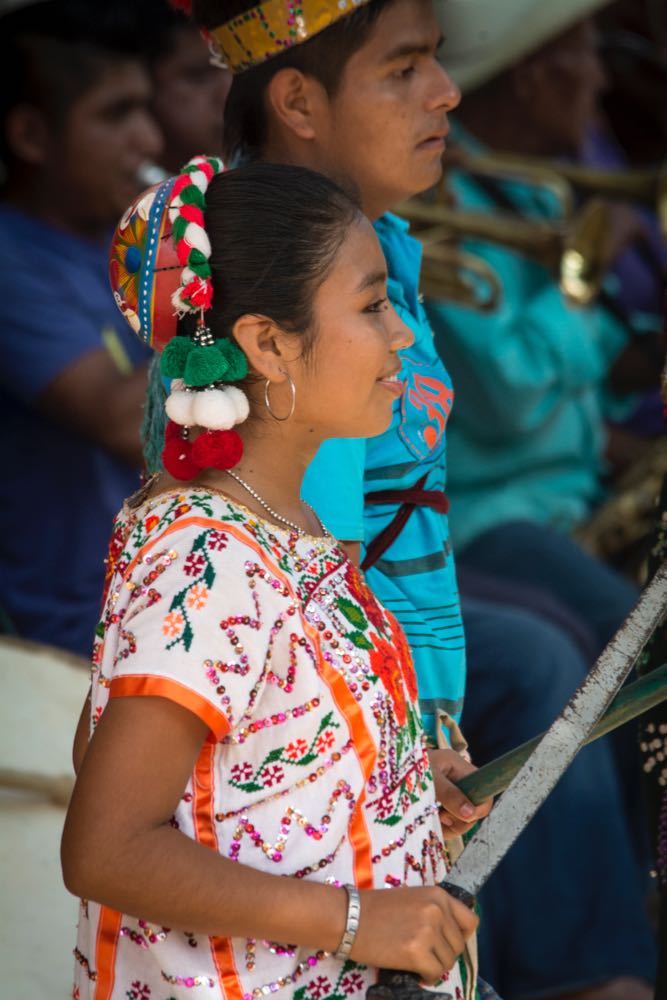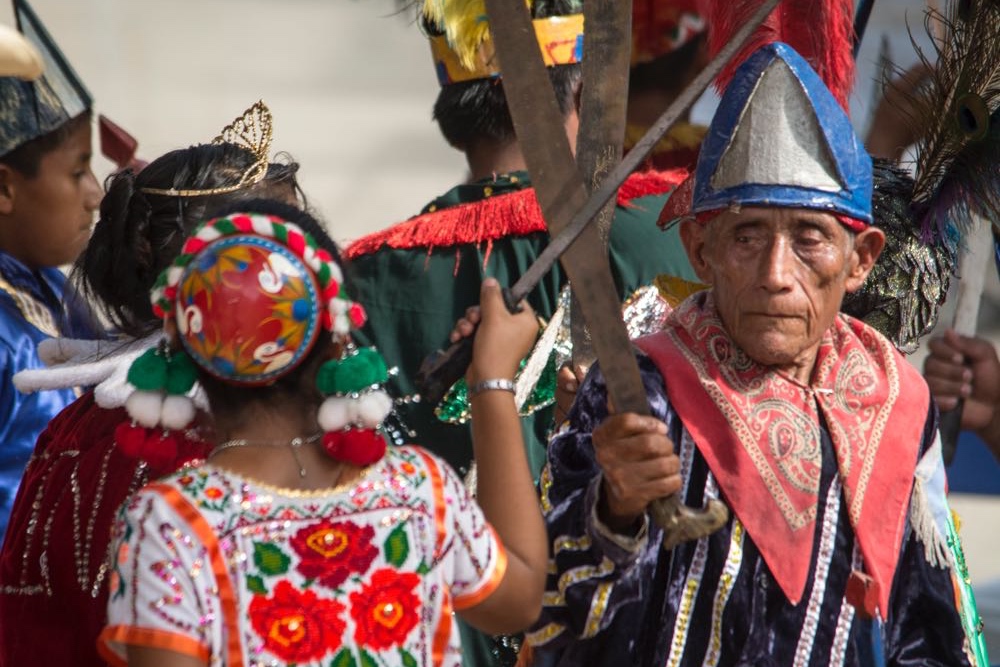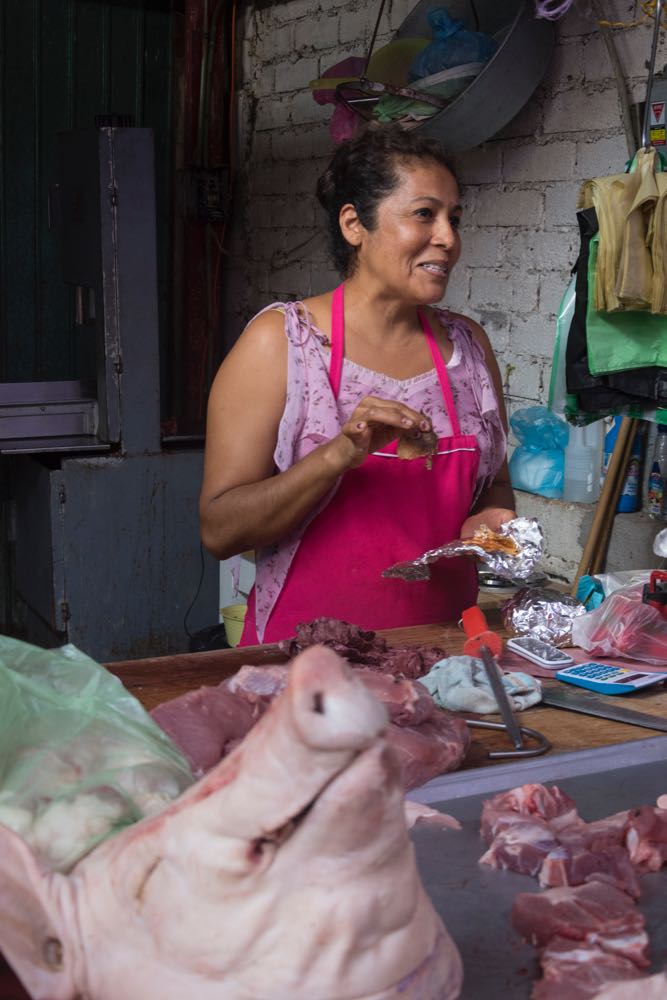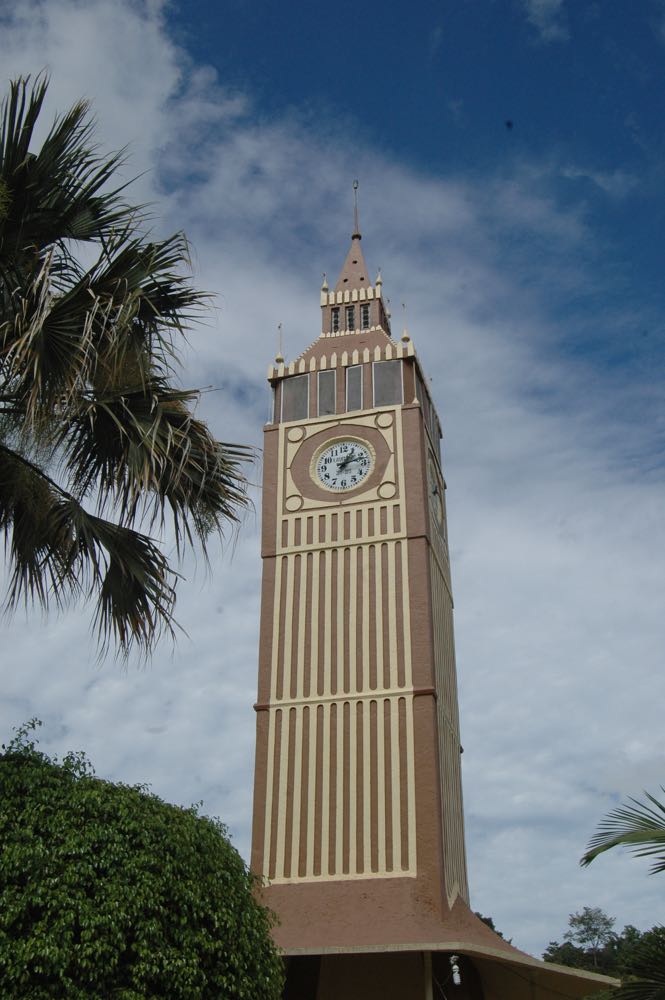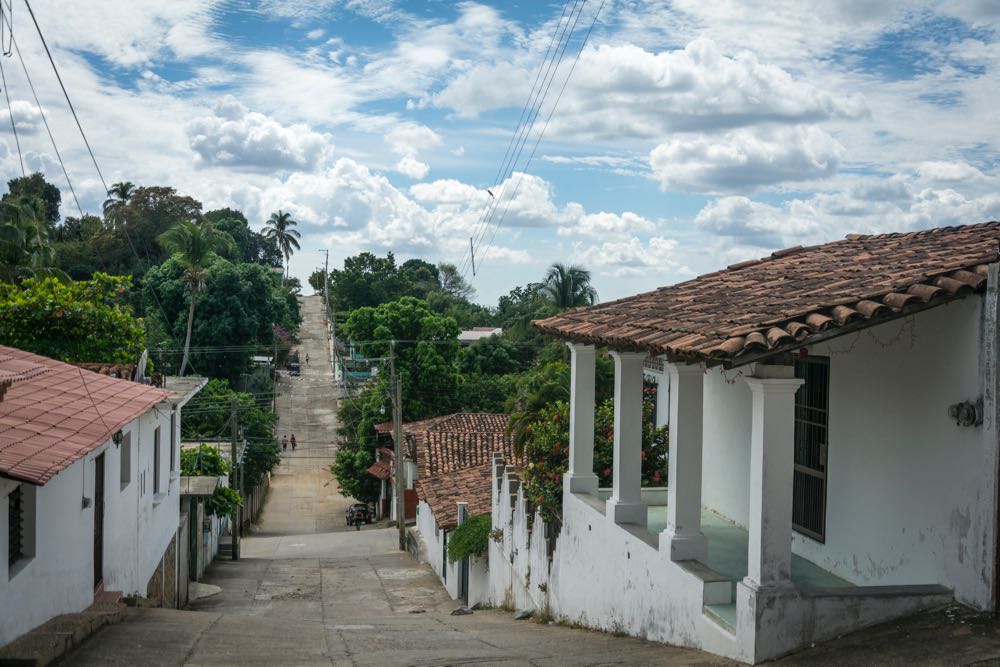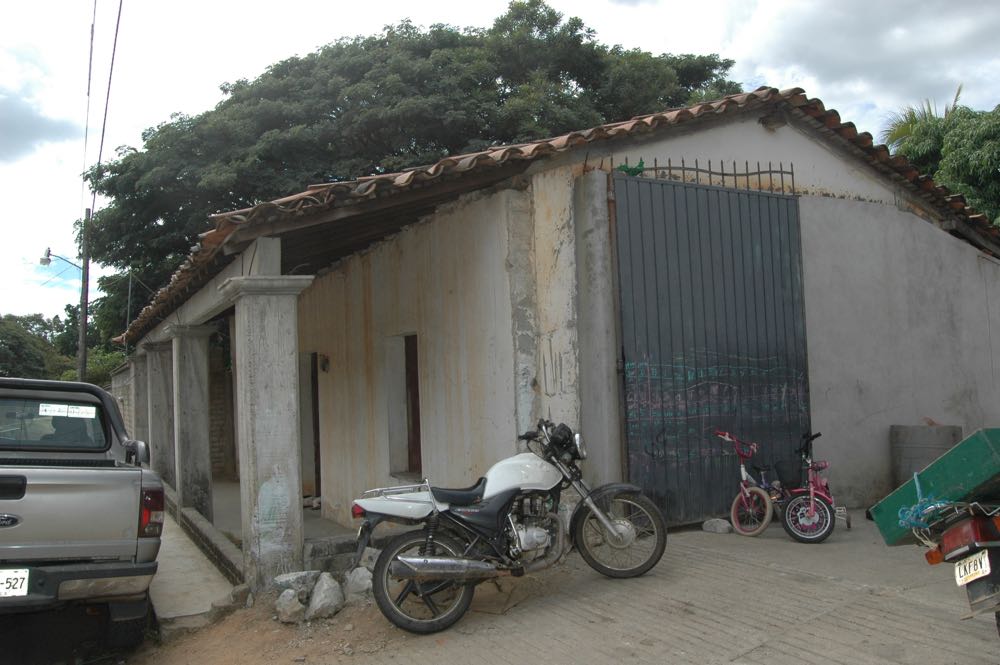Danzantes con machetes, San Pedro Amuzgos
Our Trip To San Pedro Amuzgos
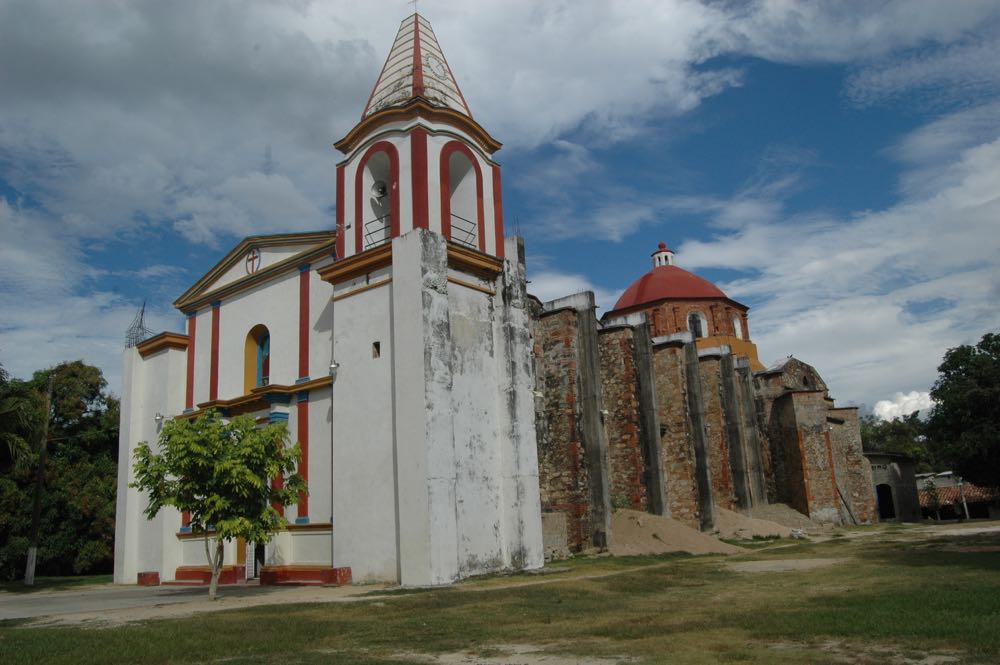
We here at ¡Viva Puerto! love to make day trips and explore the rich diversity of the Oaxaca Coast. In January our wanderlust took Ernesto Torres (photographer and driver), Noala Guerra (pilot and musical accompanist) and me (chronicler) to the market in Pinotepa Nacional, then north on Highway 125 to Cacahuatepec, and on to our final destination, San Pedro Amuzgos. Total time elapsed: 12 hours.
We left Puerto at 8 a.m. on Sunday morning and two and a half hours later we were having a fabulous breakfast of tripe soup (pancita) —a Mexican specialty— in the market at Pinotepa Nacional. The Sunday market in Pinotepa surpasses that of Puerto’s Benito Juárez market both in variety and size: lots of dried and fresh fish, local meat, fruits and vegetables, and even bunches of dried tobacco leaves.
Highway 125 is the road that connects Oaxaca City to Highway 200, just west of Pinotepa. We lost a little time by missing the entrance and having to double back, but in two hours we were in San Juan Cacahuatepec. This lovely and thriving town in the foothills of the Sierra Madre del Sur features a replica of Big Ben in the town square. It is also the birthplace of the famous composer and singer Álvaro Carrillo. Cacahuatepec is definitely a town worthy of a walk about for its streets, views, and small Sunday market.
San Pedro Amuzgos is a hill town that just exudes charm. There is the old church with its spacious yard, paved streets and freshly painted town hall. An hour north of Cacahuatepec on highway 125, it is also the center of commerce in fine, hand-woven huipiles, blouses, shawls and men’s shirts. The Amuzgos, whose community extends from Cacahuatepec to Putla and east to Guerrero, are famous for their weavings, but the shops sell garments from as far away as Chiapas. At the end of the day, the source doesn’t matter, the quality is high.
Walking down a side street, we had the good luck to come upon a group of costumed dancers waving machetes to the music of a traditional brass band. We were witnessing the celebration of the transfer to the new mayordomo of the box containing the image of the infant Jesus. The festivities included a generous amount of aguardiente courtesy of the new office holder, prof. Rolando Joaquín Merino Merino.
The ten dancers were mostly men of all ages, but there were also two teenage girls. They formed two lines and, in time with the music, waved the machetes over their heads and then would strike their partner’s blade. The machetes were short and well-notched by repeated encounters. Every few minutes a line would rotate and the dancers would have new sparring partners. It looked rather dangerous, (did I mention alcohol was being consumed?), but the dancers were good and no one got hurt.
Meanwhile, the clouds were gathering. We left San Pedro Amuzgos in a heavy rain that followed us to just before we reached Pinotepa Nacional. We were hungry and tired, but we decided to make the best use of the remaining sunlight and continued on until we reached Rinconada and the Paris restaurant, where we had a terrific dinner.

